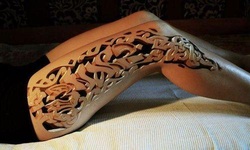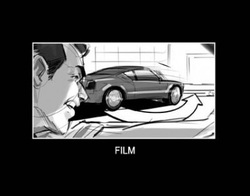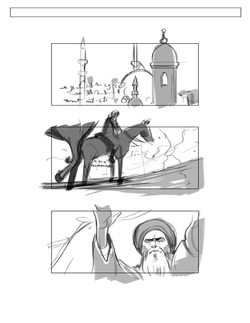
A mistakenly and commonly overlooked aspect of getting a tattoo is the primary base that’s used to deliver such mediums to the dermal canvas: tattoo ink. Much like cheap cars are unreliable to run for a decade, the same can be said for cheap tattoo ink. You truly do get what you pay for when spending money on a tattoo. So why go the cheap route and use cheap inks that won’t last or look as brilliant as you desire? Considering what you are spending to get your tattoo and that it’s a permanent affixation to your body, it’s wise to only ever consider using the finest inks for your next piece.
Fewer Preservatives
The most lauded top shelf tattoo ink contains few preservatives. This means that the ink has a shorter shelf life, but who cares. Advocating tattoo artists swear by the higher quality brands because they don’t want to inject preservative filled ink into the bodies of their clients. You should swear by such brands and innovations as well. The best inks don’t contain nasty preservatives or cheap fillers.
More Ink Pigments
The brighter tattoo inks are always brighter because they contain more actual ink pigments. The most expensive aspect of creating these inks is the pigments, which are also the most difficult to procure. Simply put: good tattoo inks contain far more pigments than cheap inks. It’s wise to never cheap out in this regard. It can mean a world of difference in brightness, quality and texture for the finished tattoo.
Organically Tested
Premium ink brands are actually tested on real skin before they are sold to tattoo parlors. This is to test how the ink takes to the skin, amongst a plethora of other tests that are administered. With top shelf tattoo ink, you know that you are getting a time tested brand. The cheap knock offs simply are selling you subpar ink.
Higher Quality Constituents
Only premium brands will guarantee that you are not putting something nasty into your skin. In fact, the best brands are almost never recalled. But cheaper brands are almost always being recalled for one reason, violation or another. Avoid this calamity by opting for premium ink brands only.
Brighter More Vibrant Look
You get what you pay for, plain and simple. An easy way to compare what you can expect as far as a better and brighter look is by comparing an economy car with a luxury car. Side by side, the Mercedes easily outdoes the Dodge Neon in nearly every single aspect. That’s the same comparison you can create in your mind when placing cheap and premium ink in juxtaposition. There simply is no comparison in the end.
Longer Lasting Tattoos
The most important reason to opt for only premium brands of tattoo ink is that your tattoo will last longer. Considering how much a tattoo costs these days and also considering the amount of discomfort that you must endure to get one, it’s wise to make sure that you are opting for the highest quality ink during the process to ensure that best results possible.
Fewer Preservatives
The most lauded top shelf tattoo ink contains few preservatives. This means that the ink has a shorter shelf life, but who cares. Advocating tattoo artists swear by the higher quality brands because they don’t want to inject preservative filled ink into the bodies of their clients. You should swear by such brands and innovations as well. The best inks don’t contain nasty preservatives or cheap fillers.
More Ink Pigments
The brighter tattoo inks are always brighter because they contain more actual ink pigments. The most expensive aspect of creating these inks is the pigments, which are also the most difficult to procure. Simply put: good tattoo inks contain far more pigments than cheap inks. It’s wise to never cheap out in this regard. It can mean a world of difference in brightness, quality and texture for the finished tattoo.
Organically Tested
Premium ink brands are actually tested on real skin before they are sold to tattoo parlors. This is to test how the ink takes to the skin, amongst a plethora of other tests that are administered. With top shelf tattoo ink, you know that you are getting a time tested brand. The cheap knock offs simply are selling you subpar ink.
Higher Quality Constituents
Only premium brands will guarantee that you are not putting something nasty into your skin. In fact, the best brands are almost never recalled. But cheaper brands are almost always being recalled for one reason, violation or another. Avoid this calamity by opting for premium ink brands only.
Brighter More Vibrant Look
You get what you pay for, plain and simple. An easy way to compare what you can expect as far as a better and brighter look is by comparing an economy car with a luxury car. Side by side, the Mercedes easily outdoes the Dodge Neon in nearly every single aspect. That’s the same comparison you can create in your mind when placing cheap and premium ink in juxtaposition. There simply is no comparison in the end.
Longer Lasting Tattoos
The most important reason to opt for only premium brands of tattoo ink is that your tattoo will last longer. Considering how much a tattoo costs these days and also considering the amount of discomfort that you must endure to get one, it’s wise to make sure that you are opting for the highest quality ink during the process to ensure that best results possible.


 RSS Feed
RSS Feed